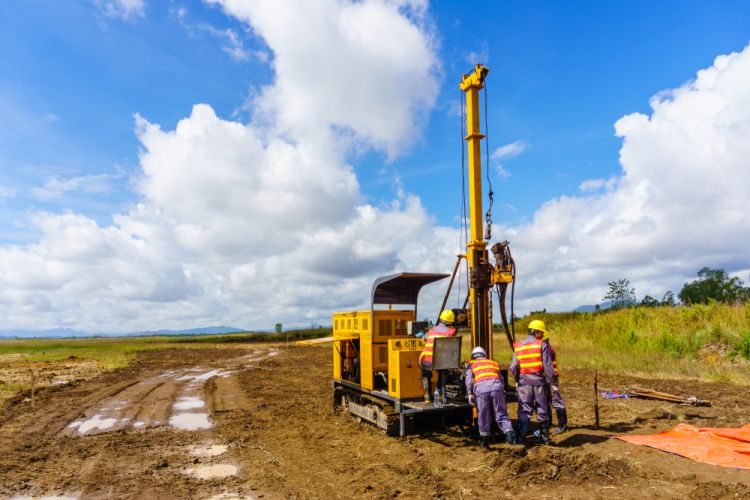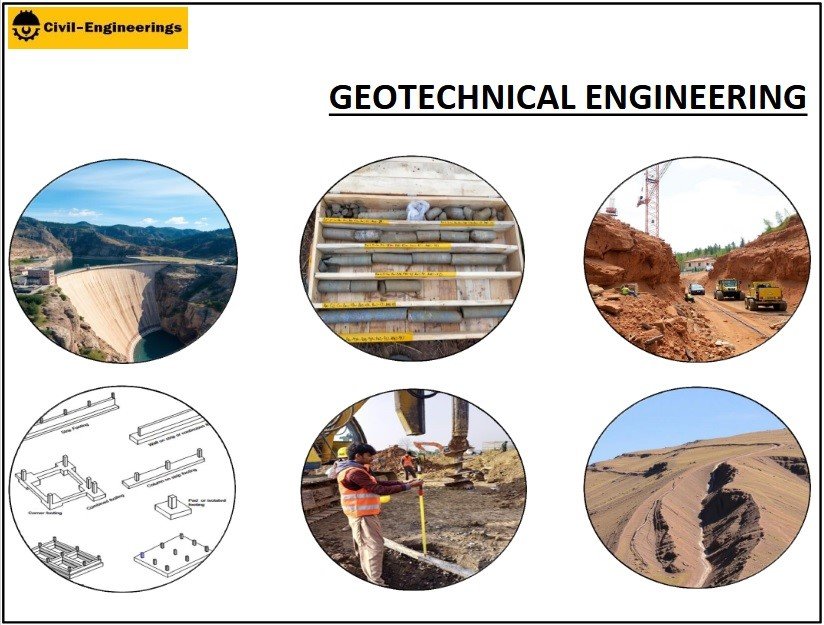What Does Specialized Geotechnical Engineering Solutions Do?
What Does Specialized Geotechnical Engineering Solutions Do?
Blog Article
Get This Report on Specialized Geotechnical Engineering Solutions
Table of ContentsGetting The Specialized Geotechnical Engineering Solutions To WorkMore About Specialized Geotechnical Engineering SolutionsAll About Specialized Geotechnical Engineering SolutionsNot known Factual Statements About Specialized Geotechnical Engineering Solutions Specialized Geotechnical Engineering Solutions - An OverviewExamine This Report on Specialized Geotechnical Engineering Solutions
William Rankine, an engineer and physicist, established an alternate to Coulomb's earth pressure theory. Albert Atterberg developed the clay uniformity indices that are still used today for soil classification. In 1885, Osborne Reynolds acknowledged that shearing reasons volumetric expansion of thick products and tightening of loose granular materials. Modern geotechnical engineering is stated to have started in 1925 with the publication of Erdbaumechanik by Karl von Terzaghi, a mechanical engineer and rock hound. Terzaghi also created the framework for theories of bearing capacity of structures, and the theory for prediction of the price of negotiation of clay layers due to loan consolidation. After that, Maurice Biot completely established the three-dimensional soil loan consolidation theory, expanding the one-dimensional design previously established by Terzaghi to more basic theories and presenting the set of standard formulas of Poroelasticity.
Geotechnical designers check out and establish the buildings of subsurface conditions and products. They also design equivalent earthworks and maintaining frameworks, tunnels, and framework structures, and may monitor and review sites, which may better involve website surveillance as well as the threat analysis and mitigation of all-natural hazards. Geotechnical designers and design geologists execute geotechnical examinations to get info on the physical properties of soil and rock hidden and beside a website to develop earthworks and structures for suggested frameworks and for the repair work of distress to earthworks and structures brought on by subsurface problems.
A Biased View of Specialized Geotechnical Engineering Solutions
Geologic mapping and interpretation of geomorphology are commonly completed in appointment with a geologist or design rock hound. Subsurface exploration usually involves in-situ testing (for instance, the common penetration examination and cone infiltration examination). The digging of test pits and trenching (especially for finding faults and slide planes) might likewise be used to learn more about soil conditions at deepness. , which utilizes a thick-walled split spoon sampler, is the most usual way to collect disrupted samples.

Commonly, the user interface's exact geometry is unknown, and a simplified interface geometry is thought. Finite inclines call for three-dimensional designs to be evaluated, so most slopes are evaluated thinking that they are definitely large and can be stood for by two-dimensional models.
The Definitive Guide for Specialized Geotechnical Engineering Solutions

Dimension of amounts and assessment of real conditions. Layout alteration per actual problems The empirical technique is ideal for construction that has currently started when an unexpected growth occurs or when a failure or crash looms or has actually currently happened. It is inappropriate for projects whose style can not be changed during building and construction.
Principles of Geotechnical Engineering. Thomson Knowing. Budhu, Muni (2007 ). Soil Auto Mechanics and Structures. John Wiley & Sons, Inc. click this site . ISBN 978-0-471-43117-6. Interrupted soil properties and geotechnical design, Schofield, Andrew N., Thomas Telford, 2006. Guerriero V., Mazzoli S. (2021 ). "Theory of Effective Stress in Soil and Rock and Implications for Fracturing Processes: An Evaluation".
Some Ideas on Specialized Geotechnical Engineering Solutions You Should Know
Concepts and Practice of Ground Improvement. Ground Renovation Concepts And Applications In Asia. Design evaluation in rock technicians.
Cengage Knowing, Stamford, 666 p. Atkinson, J., 2007. The technicians of soils and foundations. Taylor & Francis, N.Y., 442 p. Floating Offshore Wind Turbines: Actions in a Sea state Pareto Ideal Styles and Financial Analysis, P. Sclavounos et al., October 2007. Nicholson, D, Tse, C and Dime, C. (1999 ). The Observational Approach in ground design principles and applications.
What Does Specialized Geotechnical Engineering Solutions Do?
These records are tailored to meet the details needs of a task and include layout criteria and advice for the construction of a series of manufactured frameworks. As well as offering working as a consultant solutions covering areas such as incline security and load-bearing capabilities for different materials, these engineers carry out r & d activities to boost methodologies, devices, products understanding and evaluation covering entire lifecycles (Specialized Geotechnical Engineering Solutions).
Engineering the homes and auto mechanics of rocks including the application of characteristics, liquid mechanics, kinematics and product mechanics. This combines geology, soil and rock technicians, and architectural design for the layout and construction of foundations for a series of civil design jobs. This field includes anticipating the efficiency of foundation soil and rock to a load imposed by a framework, while considering performance, economic climate and safety.
Nevertheless, prices of pay normally increase as your understanding and skills grow, with standards aiming to a graduate beginning wage of between 18,000 and 28,000 annually in the UK. This rises to 26,000 to 36,000 with a few years of experience and afterwards reaching 40,000 to 60,000+ for senior, chartered or master engineers.
The Greatest Guide To Specialized Geotechnical Engineering Solutions
With the right application it is possible to master the profession and gain entry to a challenging yet gratifying and vital career. A geologist would certainly require to re-train to come to be a geotechnical designer, although there is plenty of cross-over in between both careers, which could make this much easier. Rock hounds need to have an read here understanding of soils, rocks and other materials from a scientific perspective, while geotechnical designers tale their knowledge of issues such as dirt and rock technician, geophysics and hydrology and use them to design and ecological projects.
When starting, these engineers will certainly often tend to deal with less complicated projects, developing expertise and experience prepared for more challenging job later on. Geotechnical engineers tend to be experts in details areas as they grow in experience, concentrating on specific frameworks such as trains, roads or water. These designers additionally collaborate with sustainable energy, offshore and onshore oil and gas, nuclear power, and more.
Report this page